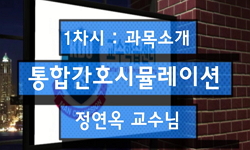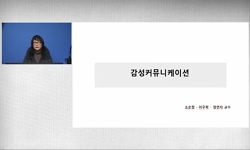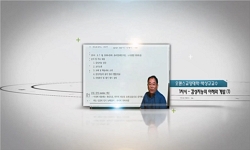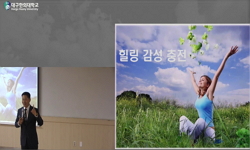Abstract A Study of Jo Ji-hoon and Kim Chun-su’ poetics - Focused on Interrelations in the history of literature Ju Yeong-jung Department of Korean Language and Literature The Graduate School of Korea University This essay was written to study ...
http://chineseinput.net/에서 pinyin(병음)방식으로 중국어를 변환할 수 있습니다.
변환된 중국어를 복사하여 사용하시면 됩니다.
- 中文 을 입력하시려면 zhongwen을 입력하시고 space를누르시면됩니다.
- 北京 을 입력하시려면 beijing을 입력하시고 space를 누르시면 됩니다.
https://www.riss.kr/link?id=T11786121
- 저자
-
발행사항
서울 : 고려대학교 대학원 , 2009
-
학위논문사항
학위논문(박사)-- 고려대학교 대학원 : 국어국문학과 2009.8
-
발행연도
2009
-
작성언어
한국어
- 주제어
-
발행국(도시)
서울
-
형태사항
161 p. ; 26 cm.
-
일반주기명
지도교수: 최동호
참고문헌 : p. 149-157 - DOI식별코드
- 소장기관
-
0
상세조회 -
0
다운로드
부가정보
다국어 초록 (Multilingual Abstract)
Abstract
A Study of Jo Ji-hoon and Kim Chun-su’ poetics
- Focused on Interrelations in the history of literature
Ju Yeong-jung
Department of Korean Language and Literature
The Graduate School of Korea University
This essay was written to study status, context or meaning of two books on poetics published in 1950s, that is, ꡔ시의 원리 The Principle of Poetryꡕ by Jo Ji-hun and ꡔ한국 현대시 형태론 Formalism of Modern Korean poetryꡕ by Kim Chun-su in poetics in 1950s. In addition, this essay intended to study unique characteristics of those poetics as well as comparison between traditional poetics and modernism poetics. The existing studies mostly limited the two poetics to personal poetics, and failed to contain a critical mind about the relationship between the two poetics in historical context of 1950s.
Traditional poetics and modernism poetics formed a new field of literature in a leading position of South Korean literature around 1950s. The former developed as a powerful group leading South Korean literature while the latter emerged as a new group criticizing the leading group. It is deemed that poetics of Jo Ji-hun and Kim Chun-su were destined to dialogue and compete with each other. Like this, dynamic composition made by the two poetics includes dynamic composition between traditional poetics and modernism poetics of the times.
Issues like national literature, traditional poetics, pure poetics, deconstruction poetics, etc. formed together with dynamic composition of the two poetics. The development of various poetics came to have organic correlations while forming corresponding logics according to changes of surrounding environment, rather than it was formed with inevitable correlations. It is necessary to examine what the logic contained in them accurately in order to investigate these issues.
First of all, the poetics by Jo Ji-hun and that by Kim Chun-su encountered at the pure poetics as they were in opposition to the ideological literature. Jo Ji-hun and Kim Chun-su who emphasized the autonomy of literature showed a negative attitude against the phenomena derived from the ideological literature and poems which were not following essential points or forms of poems which were the respect for human beings and spirit, but inclining to materials, ideology and contents. In other words, the pure poetics was their common territory. Jo Ji-hun and Kim Chun-su accepted the declaration of 'art for art's sake' as the basic element of poem. The pure poetics by the two poets, however, were opposed to each other. Jo Ji-hun emphasized the spiritual dimension, but Kim Chun-su emphasized the formal dimension, thus we can see the divergence of the pure poetics. Jo Ji-hum tried to embrace the variety of modern poems with traditionalism and Lyricism but Kim Chun-su tried to exclude traditionalism and Lyricism with deconstructive and progressive viewpoints.
The characteristics of poetics by Jo Ji-hun were universality, tradition, nature, perpetuity, sensibility, nonseparation, unity, and continuity, however, that by Kim Chun-su were deconstruction, progress, civilization, zeitgeist, intelligence, separation, deconstruction, and discontinuity. The opposing characteristics of both poetics looked like heterogeneous and antipodal, however, it did not mean a complete opposition. The cracks and interstices on the border of two poetics allowed the mutual exchanges. Both poetics sought the novelty. However, there were differences among the elements of the novelty they were looking for. In the poetics by Jo Ji-hun, we can find the stained relations between tradition and creation which are the elements of the novelty. He increased a tension between the power to the center and the power to the new direction with invitation of the viewpoints of novelty, process, or creation into the absolute view of the world which only considered tradition, nature, and universality as the elements of the world. Jo Ji-Hon's poetics could be liken to the 'poetics controlling vector direction' with emphasizing universality, nature, or tradition. In Kim Chun-su's poetics, the relationships between progress and circulation increased the tension. Even though the poetics by Kim Chun-su focused on the progress and zeitgeist, the concept of circulation was not be disregarded. In this concept of circulation, the concerns about tradition and the past or essence and universality. Even though the poetics by Kim Chun-su focused on progress and the main concern of the poetics seemed to have progressive propensities, however, it did not wholly incline to progress. In his poetics, the concept of circulation, also functioned as the opposite power of progress. The power of circulation also resisted the opposite power. The two opposite tension made an impelling force and led their poetics into a new direction like vector direction.
The two poetics by the two poets, universal and deconstructive poetics, were the most prominent figures of literature at that time. One was on the side of traditional poetics and the other was on the side of modernism poetics. They also presented another opposition because the former took a serious view of universality and eternity and the latter took a serious view of progress and deconstruction according to the era and history. Competition between two fields of literature and between two poetics were meaningful because they were in the vanguard of the future poetry though the era was in a muddle. Two poetics are very meaningful even now as well as 50 years ago. When we say tradition and modernism or separate new and old one, we already estimates the logic of power and the concern for value. The argument about continuity or extinction will be continued in the future like the present to the past. And then this will cause the problems of universality and individualization, and we need to choose one between universal, personal, or differential ethics.
Keyword : Jo Ji-hun, Kim Chun-su, 1950s, national literature, traditional poetics, pure poetics, modernism poetics, lyricism, prose poem, universal poetics, universality, tradition, nature, perpetuity, sensibility, nonseparation, unity, continuity, deconstruction, deconstructive poetics, progress, civilization, zeitgeist, intelligence, separation, discontinuity, Romanticism, Classicism
국문 초록 (Abstract)
국문초록 조지훈과 김춘수의 시론 연구 -시론 형성의 문학사적 맥락을 중심으로 주영중 국어국문학과 고려대학교 대학원 이 글은 1950년대 발간된 두 권의 시론집, 조지훈의 ꡔ시의...
국문초록
조지훈과 김춘수의 시론 연구
-시론 형성의 문학사적 맥락을 중심으로
주영중
국어국문학과
고려대학교 대학원
이 글은 1950년대 발간된 두 권의 시론집, 조지훈의 ꡔ시의 원리ꡕ와 김춘수의 ꡔ한국 현대시 형태론ꡕ을 50년대의 문학사적 맥락을 중심으로 그 위상이나 의미에 대해 살피려 한다. 두 시론을 비교함으로써 전통시론과 모더니즘 시론의 대비적 면모는 물론 그들 시론의 독자적 특징을 밝히려 한다. 기존의 연구들은 두 시론을 일개인의 시론으로만 국한시켜 연구하는 시각이 지배적이었고, 50년대라는 시대적 맥락 속에서 두 시론이 어떤 관계를 형성하고 있었는지에 대한 문제의식을 담고 있지 못했다는 점에서 문제점을 노출시킨다.
전통시론과 모더니즘 시론은 50년대를 전후한 시기에 남한문학의 주도적인 입장에 서서, 새로운 문학장(場)을 형성하게 된다. 전자는 남한 문학을 주도하는 세력으로 부상하고, 후자는 그 주도 세력을 비판하고 부정하면서 새로운 세력으로 등장한다. 조지훈과 김춘수의 시론은 시기적으로도 영향력 면에서도 서로 대화하고 대결하는 위치에 서 있을 수밖에 없었다고 판단된다. 이와 같이 두 시론은 당대의 전통시론과 모더니즘 시론의 역학적 구도를 포함하고 있다.
민족문학, 전통시론, 순수시론, 해체시론 등등의 문제들은 이러한 두 시론의 역학적 구도와 함께 형성되었다고 할 수 있다. 이와 같은 다양한 시론의 전개는 사실 필연적인 연관성을 가지고 생성되었다기보다는 주변 환경의 변화와 그에 따른 대응논리를 형성하는 가운데 유기적인 연관을 가지게 된 측면이 강하다. 이러한 문제들을 살펴보기 위해서는 그것들 속에 내포된 논리가 무엇인지에 대한 정확한 고찰이 필요하다.
조지훈 시론과 김춘수 시론은 우선 순수시론이라는 지점에서 조우하는데, 그것은 그들이 이데올로기 문학에 반대하는 입장에 서 있었기 때문이다. 조지훈과 김춘수는 문학의 자율성, 시의 자율성을 강조하면서 이데올로기 문학과 이데올로기 시가 인간과 정신을 중시하는 시의 본질적인 지점 또는 형태를 중시하는 지점에서 멀리 떨어진 채 물질과 이념성, 그리고 내용에만 치우치는 현상에 부정적인 태도를 보인다. 즉 순수시론은 조지훈과 김춘수가 공유하는 공통범주에 해당한다고 할 수 있다. 조지훈과 김춘수는 ‘예술을 위한 예술’이라는 선언을 시의 기본적인 요소로 받아들인다. 하지만 순수시론은 조지훈과 김춘수의 시론 안에서 뚜렷하게 대립되는 방식을 취한다. 조지훈이 시의 정신적 차원을 강조했던 것과는 달리 김춘수는 시의 형식적인 차원을 강조하게 되는데, 여기에서 우리는 순수시론이 분기하는 현상을 볼 수 있다. 조지훈이 전통주의와 서정주의를 중심으로 현대시의 다양성을 포용하려 한다면, 김춘수는 해체와 진보의 입장을 취하면서 전통주의와 서정주의를 배제하려는 측면을 보인다.
조지훈의 시론과 김춘수의 시론은 각각 보편/해체, 전통/진보, 자연/문명, 영원성/시대성, 감성/지성, 비분리/분리, 통합/해체, 연속/불연속의 특징을 보여준다. 조지훈의 시론과 김춘수의 시론의 대립하는 쌍들은 서로 이질적이고 대척적인 자리를 형성하는 듯 보이지만, 완전하고도 철저한 대립 관계를 이루는 것은 아니다. 경계 표시 사이에 있는 균열과 틈은 언제든 넘나들 수 있는 가능성을 지니고 있다. 조지훈 시론과 김춘수 시론은 모두 새로움을 추구한다. 하지만 두 시론이 추구하는 새로움의 내용에 해당하는 구성 요소들은 서로 다르다. 조지훈 시론의 경우는 전통과 창조라는 요소들 사이에서 긴장관계를 형성하며 나아간다. 조지훈은 전통, 자연, 보편이 세계의 전부라고 생각하던 절대적 세계관에 새로움 혹은 과정과 생성의 관점을 도입함으로써 중심으로 수렴하려는 힘과 새로움의 방향으로 팽창하려는 힘 사이의 긴장 관계를 만들어낸다. 다만 조지훈의 시론은 보편이나 자연, 전통 쪽으로 힘을 더 실어 벡터의 방향을 조절하는 시론이라고 할 수 있다. 김춘수 시론의 경우는 진보와 순환이라는 관계가 긴장 관계를 형성하면서 나아간다. 김춘수 시론은 진보와 시대성을 중심으로 이루어진 시론이지만 또한 순환이라는 개념 또한 무시되지는 않는다. 이 순환이라는 개념 속에는 사실 전통과 과거 또는 본질과 보편의 문제가 포함되어 있다. 김춘수 시론은 진보 쪽에 보다 많은 힘을 실어주어 진보의 방향 쪽으로 흘러가지만 완전히 그 방향으로만 달려가지는 않는다. 순환이라는 반대 축의 힘이 또한 작용하고 있기 때문이다. 순환의 축 또한 끌려가지 않으려는 힘을 행사한다. 이 두 긴장관계가 추동력을 만들고 벡터의 방향을 새로운 방향으로 이끈다.
조지훈과 김춘수의 시론, 즉 보편시론과 해체시론이라는 두 대별적 시론은 당대 문학의 첨단에 서 있었다고 할 수 있는데, 한편은 전통시론의 입장에 또 한편은 모더니즘 시론의 입장에 서 있었던 것이다. 또한 전자는 보편성과 영원성의 시학을 중시하며, 후자는 시대와 역사에 따른 진보와 해체를 중시한다는 점에서도 대결하는 양상을 보인다. 이러한 당대를 통한 문학장과 문학장의 대결구도, 시론과 시론의 대결구도는 혼란한 시기에 미래의 시에 대한 방향성을 제시하는 측면에서도 의의를 지닌 것이었다. 두 시론은 당대만이 아니라 50년 정도의 시간이 흐른 현 시점에도 유의미한 전언을 보내고 있다. 우리가 전통과 모더니즘이라 말할 때 또는 옛 것과 새로운 것을 구분할 때, 그러한 판단 속에는 이미 어떤 힘의 논리와 가치의 문제가 포함되어 있다. 연속이냐 단절이냐 하는 문제는 오래 전에도 지금도 다시 미래에도 문제가 될 것이다. 그것은 다시 보편의 문제와 개별의 문제를 낳을 것이며, 보편의 윤리와 개인의 윤리 또는 차이의 윤리 문제와 결부되어 우리의 선택을 기다릴 것이다.
주제어 : 조지훈, 김춘수, 1950년대, 민족문학, 전통시론, 순수시론, 모더니즘 시론, 서정주의, 산문시, 보편시론, 보편성, 전통, 자연, 영원성, 감성, 비분리, 통합, 연속, 해체, 해체시론, 진보, 문명, 시대성, 지성, 분리, 불연속, 낭만주의, 고전주의
목차 (Table of Contents)
- 목 차
- 제1장 서론 1
- 1. 연구사 검토 및 문제제기 1
- 2. 연구 목적 및 연구 방법 10
- 목 차
- 제1장 서론 1
- 1. 연구사 검토 및 문제제기 1
- 2. 연구 목적 및 연구 방법 10
- 제2장 보편시론과 조화의 시론 : 조지훈의 ꡔ시의 원리ꡕ 20
- 1. 보편과 통합의 시론 추구 23
- 2. 시의 순수성 회복과 산문화에 대한 경계 42
- 3. 연속적 세계관과 전통의 창조적 변용 57
- 제3장 해체시론과 형태시론 : 김춘수의 ꡔ한국 현대시 형태론ꡔ 69
- 1. 시 형태에 대한 자각과 순환적 진보 시관 73
- 2. 산문화의 지향과 이미지즘 92
- 3. 해체적 세계관과 미학적 허무주의 106
- 제4장 보편시론과 해체시론의 공통범주와 문학관의 분기 121
- 제5장 결론 143
- 참고문헌 149
- Abstract 158













